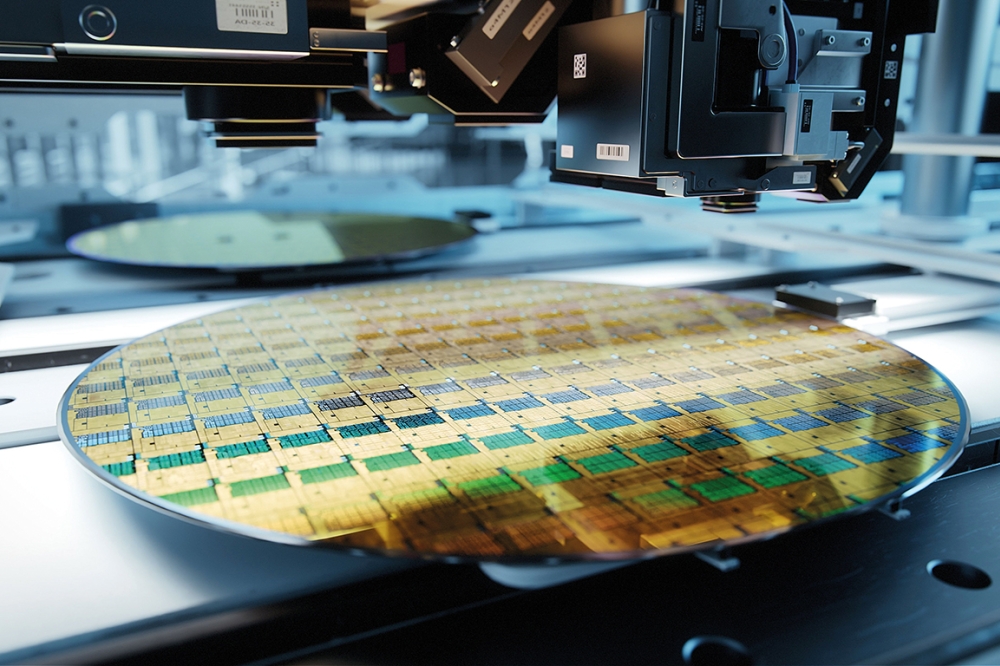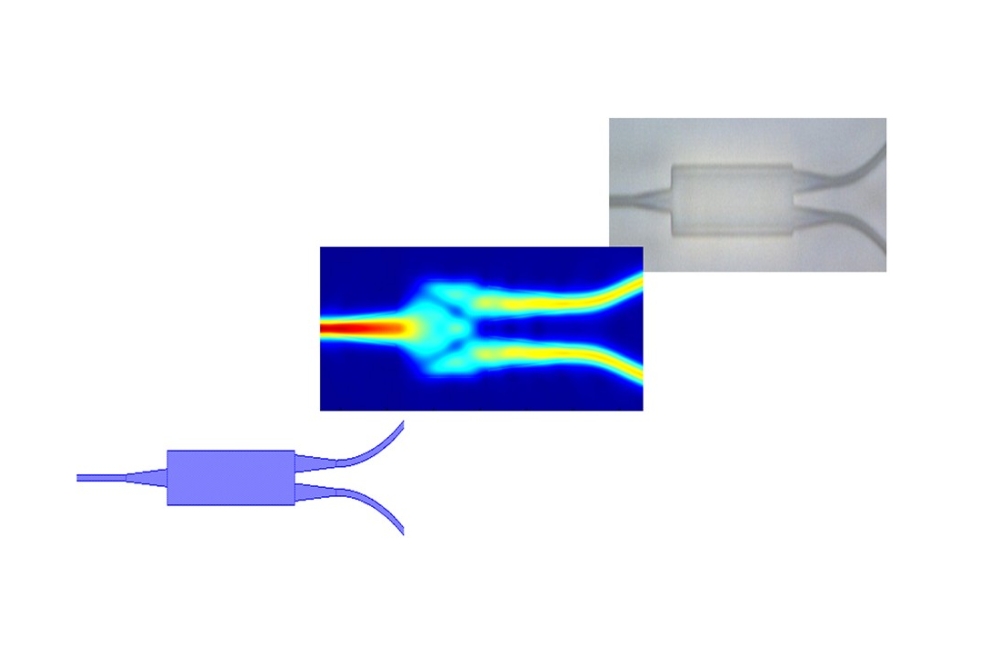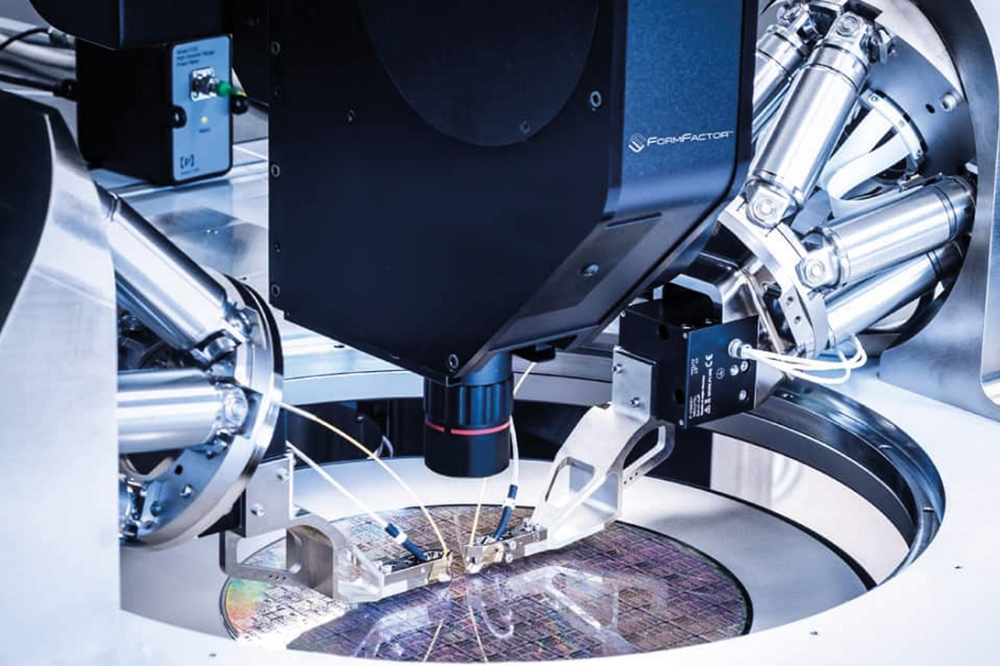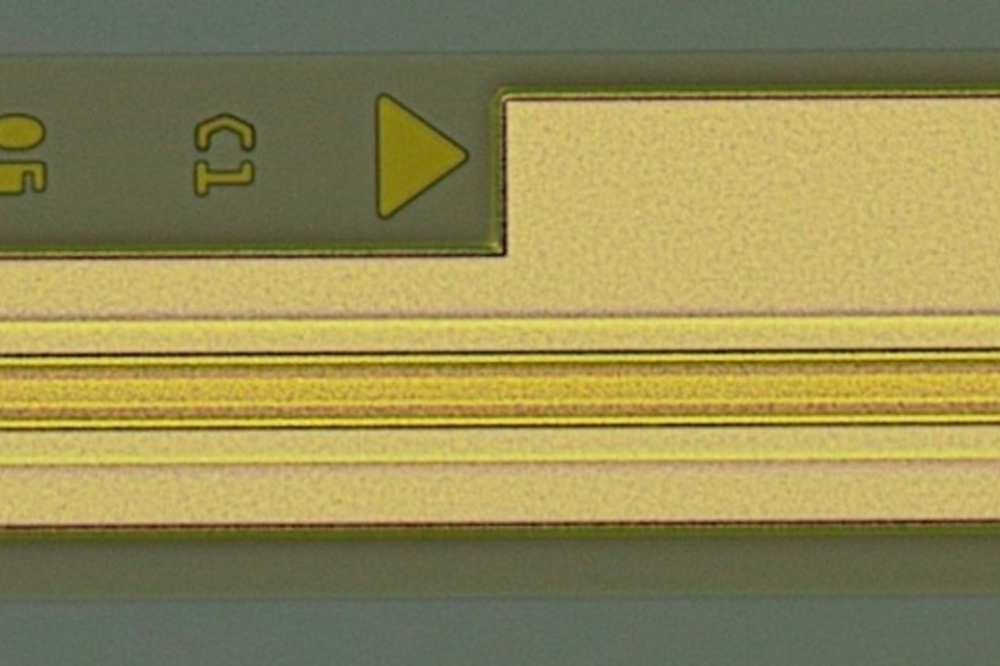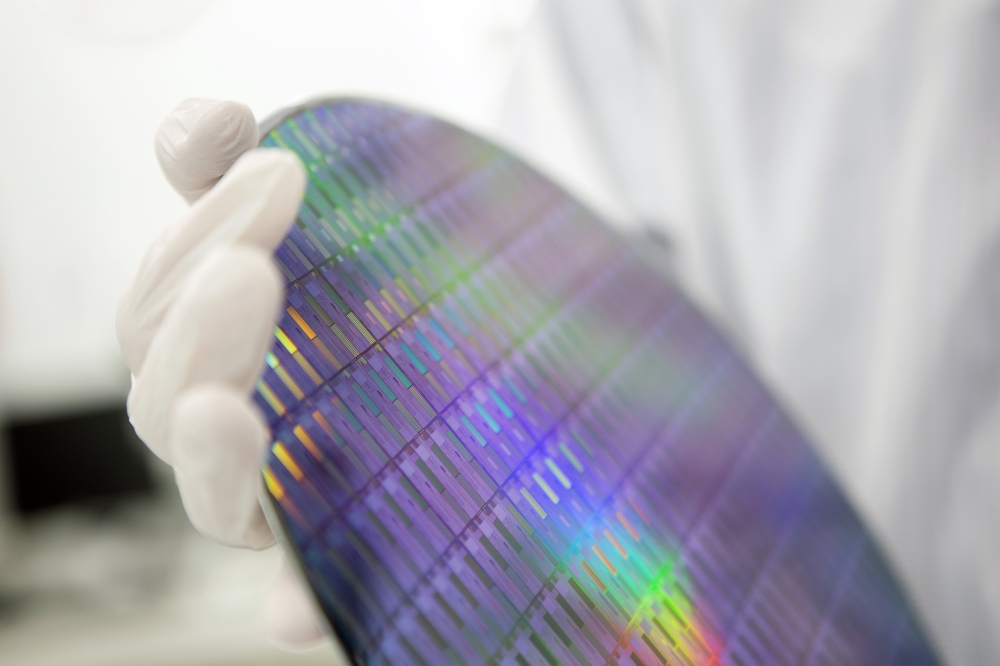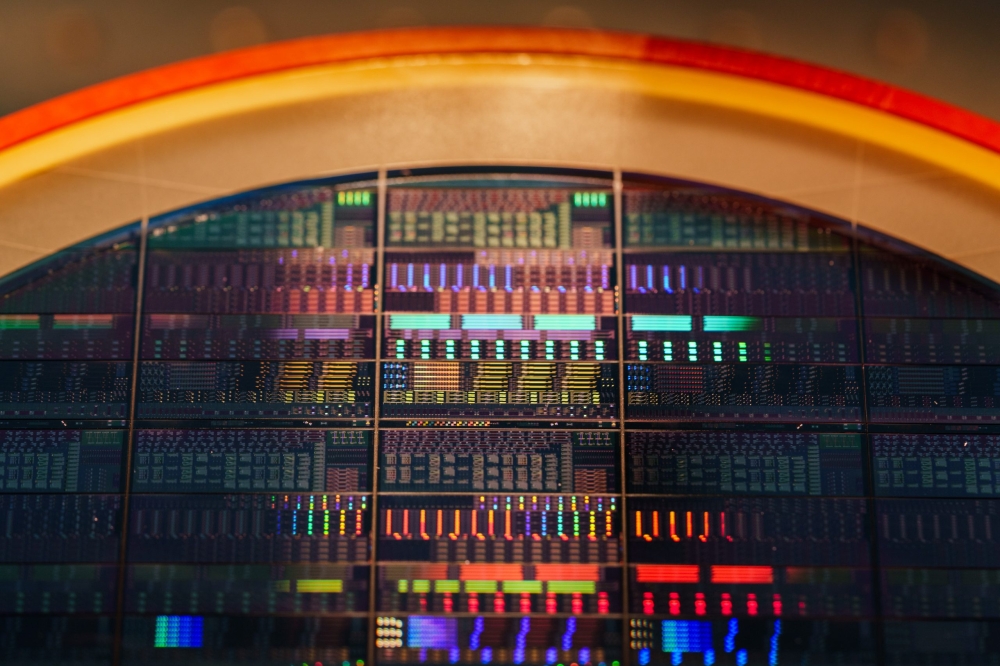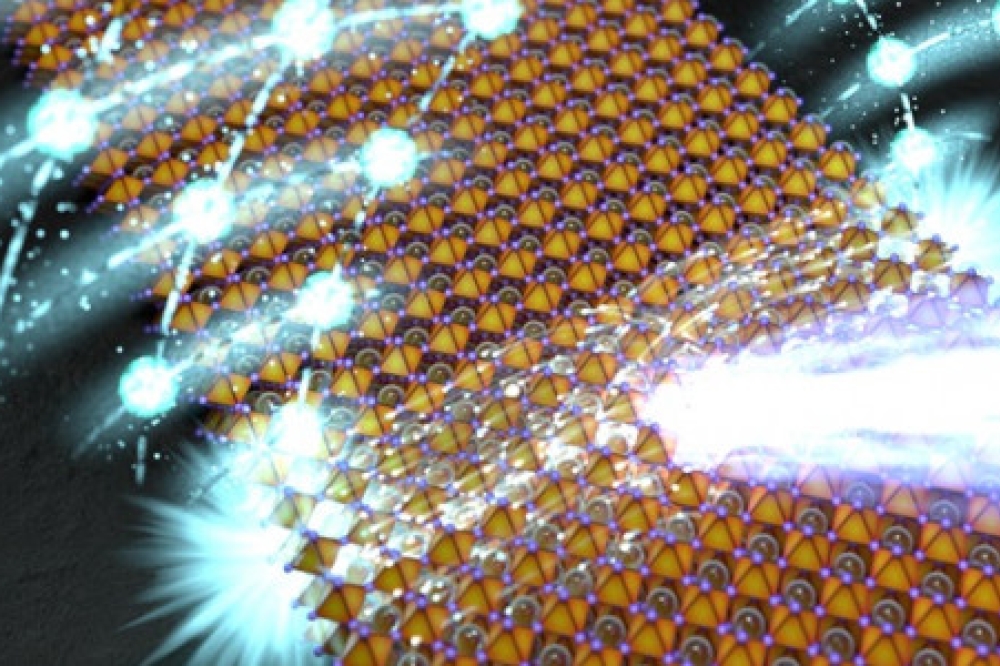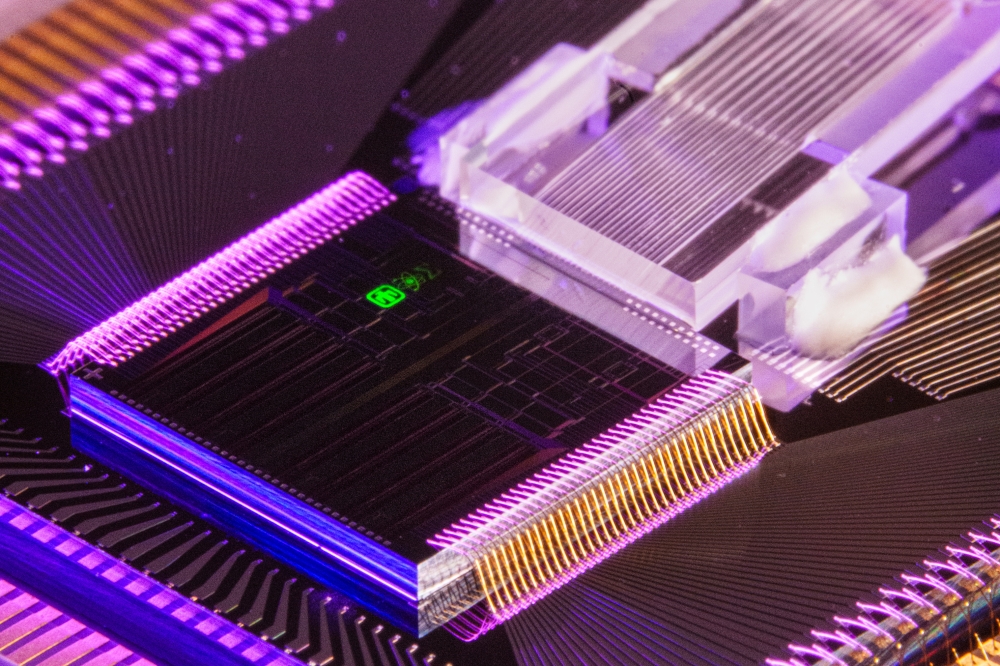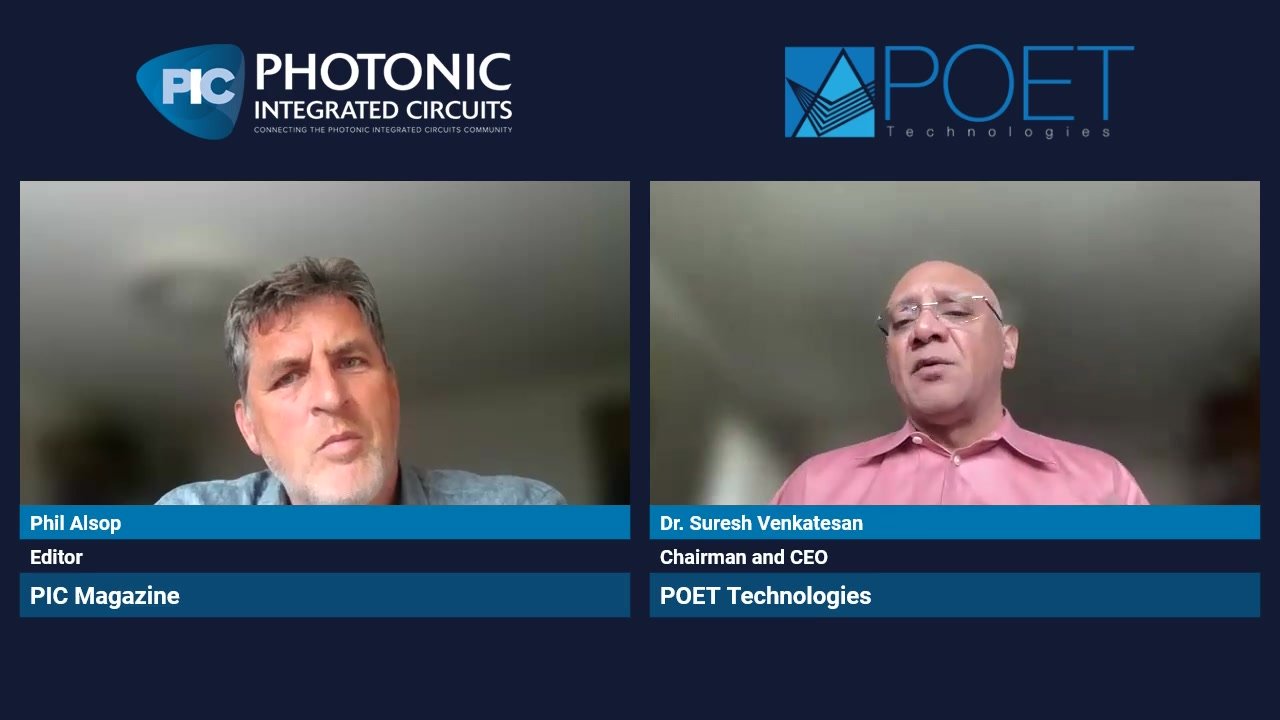UCSB scientists create silicon-based laser for DARPA
DARPA's Electronic-Photonic Heterogeneous Integration (E-PHI) program has successfully integrated billions of light-emitting quantum dots on silicon to create a silicon-based laser.
The researchers, who were working on the program at the University of California, Santa Barbara (UCSB), not only generated light emission on silicon but overcame lattice mismatch - a common problem in past efforts to grow non-silicon laser materials directly on silicon. ![]()
Above: Optical micrograph of III-V lasers monolithically integrated on Silicon substrates
DARPA started the E-PHI program in 2011 with a goal of integrating chip-scale photonic microsystems with high-speed electronics directly on a single silicon chip. Although many photonic components can now be fabricated directly on silicon, realising an efficient laser source on silicon has proven to be very difficult. Traditional approaches to adding lasers - and by extension, gain material - on-chip include separately fabricating lasers on expensive wafers, which then have to be bonded onto silicon chips. This conventional bonding process requires extreme precision and time that drives up the cost of production.
In a paper published by Applied Physics Letters, engineers at UCSB showed it was possible to deposit successive layers of indium arsenide material directly on silicon wafers to form billions of light-emitting quantum dots.
This method of integrating electronic and photonic circuits on a common silicon substrate could eliminate wafer bonding, and has application in numerous military and civilian electronics where size, weight, power and packaging/assembly costs are critical.
"It is anticipated that these E-PHI demonstrator microsystems will provide considerable performance improvement and size reduction versus state-of-the-art technologies," said Josh Conway, DARPA program manager for E-PHI. "Not only can lasers be easily integrated onto silicon, but other components can as well, paving the way for advanced photonic integrated circuits with far more functionality than can be achieved today."
In addition to generating light emission on silicon, the UCSB team overcame lattice mismatch - a common problem in past efforts to grow non-silicon laser materials directly on silicon. The UCSB team proved lasers grown on silicon performed comparably to those grown on their native substrate. These results are now serving as a foundation for the development of other photonic components such as optical amplifiers, modulators and detectors.











